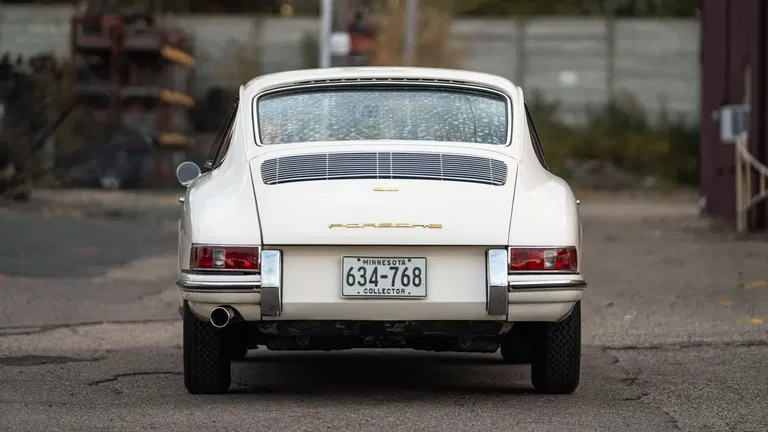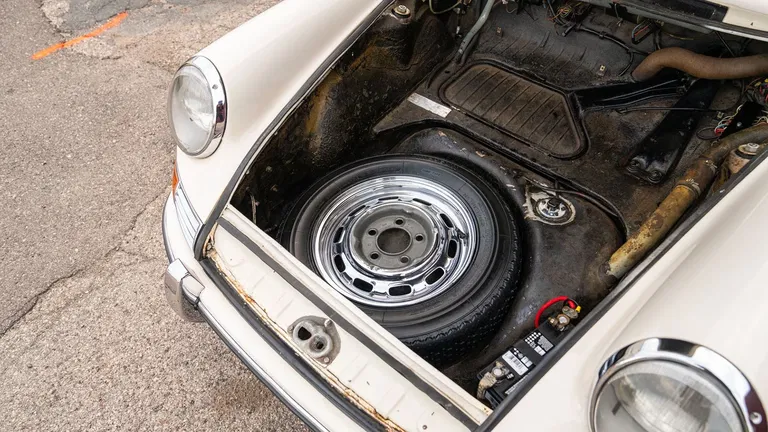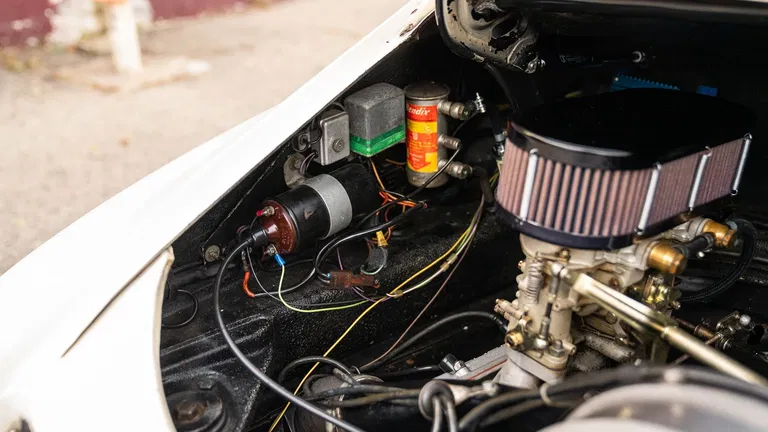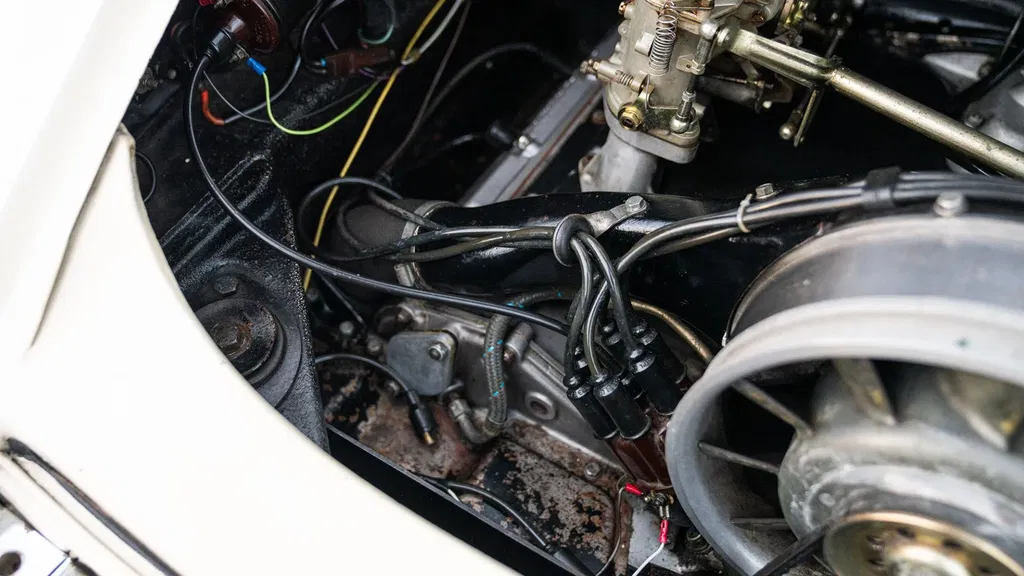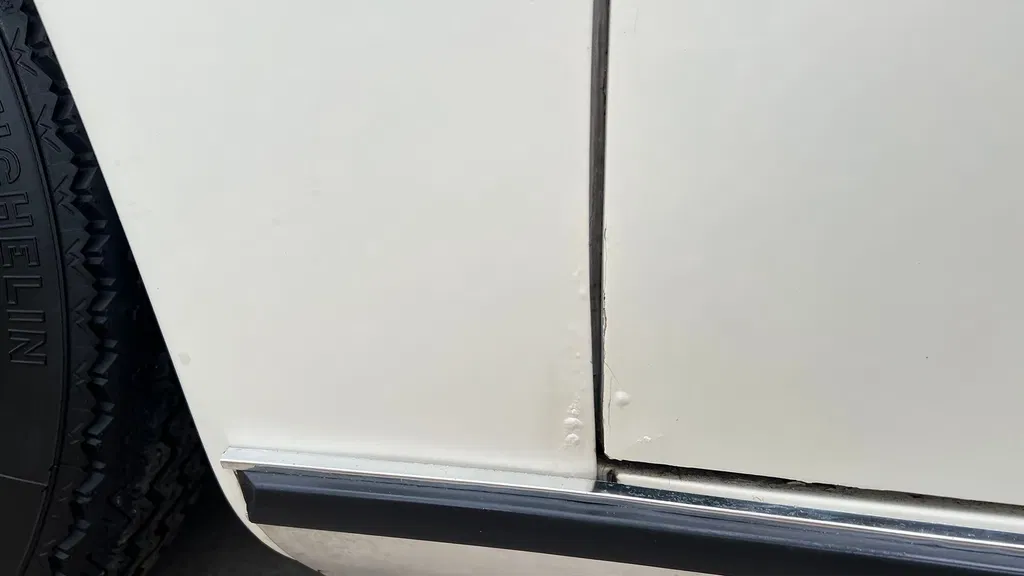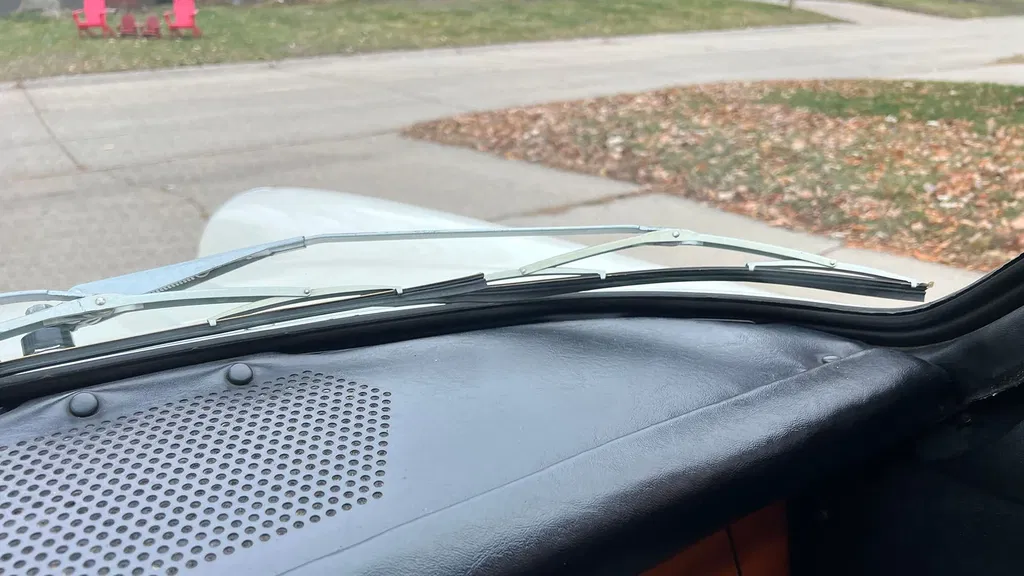Chassis No. 300184
Engine No. 900237
Transmission No. 100216
For decades, the mantra to follow for those interested in a Porsche 911 was to “buy the newest affordable example.” Over time this changed with the early 911 S (1967-1973) models getting their well-deserved due. In time, the focus expanded to the earliest 900 series models produced in 1964 – the 901 and earliest 911s. These early 1964-built cars are a veritable feast for the eyes with minute details everywhere for those who know what to look for and where to look. Seats with six pleats, a small brass ignition bezel, a five-button dashboard, and six-piece teak dash trim are all notable early interior attributes. A smooth rear engine compartment latch panel without indents and seal, an engine lid with seal and a smaller two-piece “PORSCHE” script on the rear lid, a front trunk with black paint on the reverse are all subtle body and exterior characteristics that make the Porsche cognoscenti sit up and take note. Each of these details and more should be more well-known, yet many early 911s have suffered from average restorations wiping them away, and worse, the dreaded impact bumper “update” and turbo look fad that lasted nearly two decades. Yet, there are those 1964-built 911s – rare as they are – that remain relatively undisturbed, enjoyed for their inherent good looks and performance unconcerned of the latest trends. This matching numbers 1964-built Porsche 911, chassis number 300184, is one of these emerging from long-term ownership assured that their stylish nature and exceptional detail will be continue to be appreciated.
A detail of these early 1964-built Porsche 911s unmentioned thus far, however, comes not from the car itself, but a handwritten ledger created at the outset of production. In it, the most important aspects of these earliest 911s (chassis number, completion date, engine serial number and internal number, transmission number, and interestingly, its Blaupunkt radio serial number, if so optioned) were recorded. The first production month, September 1964, only records 18 cars built starting with 901 300001, with the ledger recording this 911, chassis number 184 finished on 14 December 1964. Another interesting detail of this ledger is that it records that chassis 184 was originally fitted with engine number 900313, which is then struck and 900237 in replacement. Its Kardex warranty card, often the only form of original source documentation, fills in the rest of the build details. It was finished, as it remains today, in Light Ivory (6404) with a Black leatherette interior with Pepita cloth seat inserts. The Kardex only records its second engine serial number received before leaving the factory along with its optional Webasto gas heater and Dunlop tires. Furthermore, it was delivered to dealer “G.W. Schultz” in Düsseldorf, Germany, today known as Porsche Zentrum Düsseldorf and still held by Gottfried Schultz Sportwagen Düsseldorf GmbH & Co. The first owner was recorded under a business, Friedrich Jüntgen & Sohn, located in Solingen, a 30-minute drive from Düsseldorf center. A second owner, also located in Düsseldorf is recorded on the Kardex with warranty repair and service work noted for the 911 with the last entry recorded on 3 March 1968 with 42,638 kilometers on its odometer.
According to the consigning estate, a music professor touring Germany in the late 1960s, purchased chassis number 300184 bringing it to the United States. Approximately a year later, in 1969, it was purchased by Glen Whitesell beginning a remarkable 54-year ownership. The next years and decades were perhaps its most vulnerable. The basic unibody of the 911 did not see wholesale change until 1997 and as a result trendy updates to the earliest narrow body cars were rife. Updated bumpers, fender flares, aerodynamic appendages, “sport” steering wheels, form fitting seats, and Quadraphonic stereos all threatened the factory-built originality of not only 300184 but many other early 911s throughout the 1970s and 80s. Yet, Whitesell remained steadfast against the rising tide of modifications over the next quarter century and, as a result, chassis number 300184 retains a stunning level of unrestored originality, rarely seen in one of the 232 built in 1964.
Most incredible is its interior. The front seats feature the earliest six-pleat seat insert pattern in the original Pepita material with Whitesell clearly resisting replacing the lower driver’s seat section with reproduction Pepita or perhaps worse, generic houndstooth. The original five-button dashboard is simply a delight, placed atop the six-piece teak facia that remains, as constructed without a Blaupunkt or modified with a later head unit. The same goes for the single piece knee pad, loop-style fuel door release mechanism, aluminum-spoke, teak-rimmed steering wheel, small brass ignition bezel, and black “mushroom” shift knob with a single center dimple, an early 911 carry over from the 356 and 904 Carrera GTS.
The exterior features an older repaint, a Goldie sunroof said to be added at Reutter shortly after production in while Germany, aftermarket fog lights, and added rocker trim. But even with these subtle later additions, the truly special features of its early body remain. Perhaps most important to those inspecting an early 911 for the type of originality that this car holds would be the rear latch panel stamped before Porsche added the gold engine specification decals to their running changes list. Furthermore, the engine lid features the very early two-piece Porsche badge above the rubber seal affording the engine fresh air through its ultra-rare 20 mm “tall” engine grille. The front end is just as remarkable with the underside center section of the front hood finished in black housing an impressively original trunk worthy of study. With the carpet removed, the original aluminum chassis tag is set next to the body stamp under an original thin layer of paint and bitumen.
Mechanically, chassis number 300184 is still fitted with its original matching numbers engine and transmission per its Kardex warranty card. An obvious, and welcome, change to the engine comes in the form of Weber carburetors, yet for those who yearn for the original Solex 40 PI setup, a single side with intake manifold accompanies the car. For years the car was serviced by the well-known hands at Nürburgring Inc. In March 2018, 300184 visited Porsche Minneapolis, a Porsche Classic Partner, for a “Complete Inspection” after two years of storage. Porsche Minneapolis performed a major tuneup, with fresh oil, new spark plugs, new plug wires, intake gasket replacement, with a carburetor and timing adjustments. Additionally, the matching numbers Type 901/0 transmission was removed and a new pressure plate, clutch disc, and throw out bearing were installed. Final work included a shift linkage adjustment, fuel tank drain and fuel line replacement, a brake fluid flush, and new hood struts. Additional work was carried out by Porsche Minneapolis in 2021 and most recently, beginning in July 2023, Porsche Minneapolis completed another oil and filter change along with a complete multi-point inspection.
As is well known, the devil is in the details. This is never truer than with very early hand-built examples of the iconic Porsche 911. This matching numbers, 1964-built 911 showcases these exceptional hand-recorded original details better than any other to come to market in recent memory. Preserved for over half a century by its owner as a love letter to the unique aspects that make it special, chassis number 300184 offers a truly unrepeatable opportunity for a new caretaker to explore and maintain its exceptional originality just as Glen Whitesell has done since 1969.
















